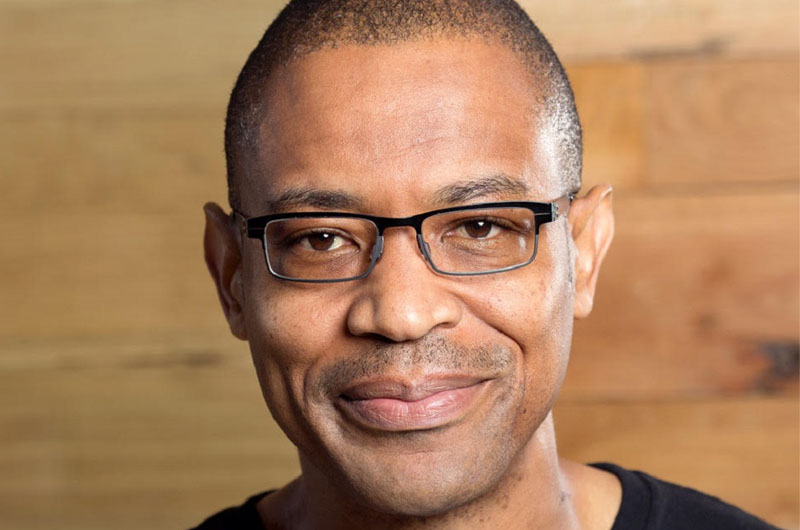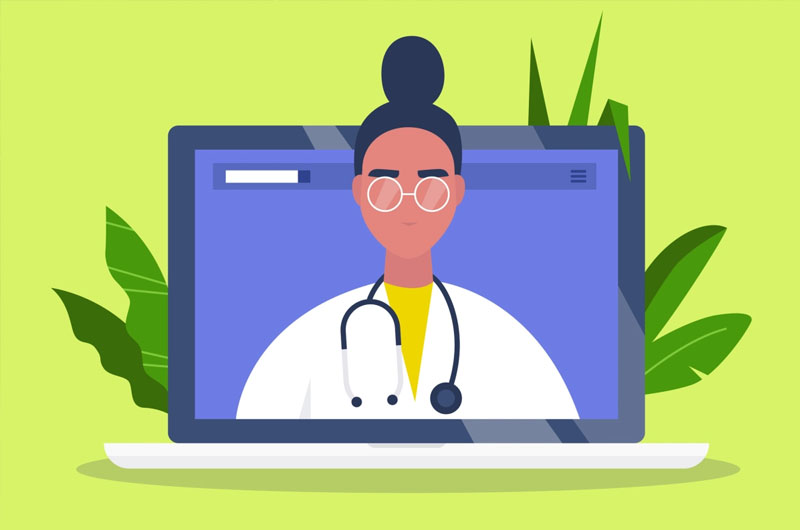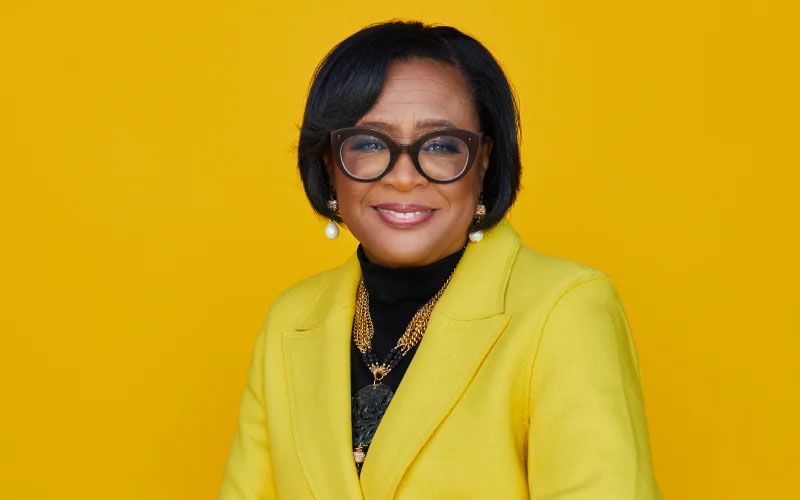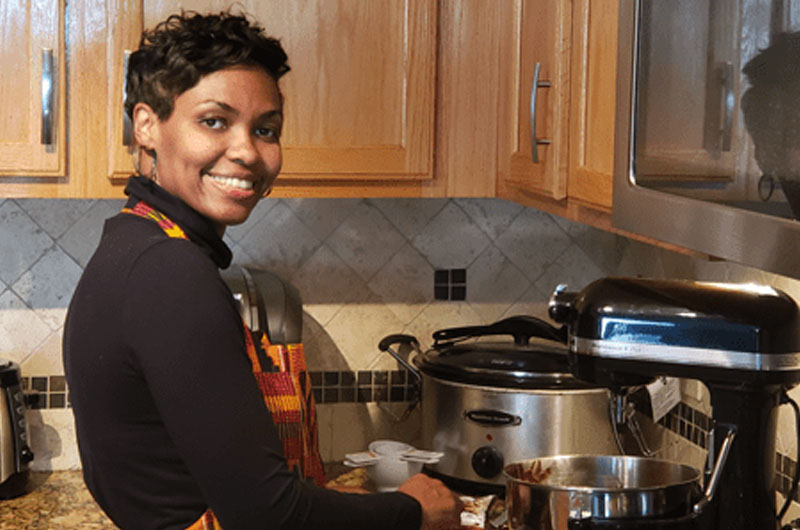Hugh Molotsi believes “technology should help improve people’s lives.” That was his “guiding principle” for the 22 years he worked at Intuit, where he built innovative solutions for entrepreneurs.
But, he says, after decades of living and working in Silicon Valley, he realized that while “technology has the potential to be egalitarian in its ability to give people new tools to improve their quality of life,” he saw “how easy it is for companies to lose sight of that and focus their efforts purely on driving innovation that largely benefits people of higher financial means.”
So Molotsi decided to tackle the challenge head-on and founded Ujama (which means extended family in Swahili), a messaging platform that helps connect communities. From there, Molotsi launched a farmers market app called Soko, which is Swahili for “market.”
To be even more inclusive, Molotsi developed a way for SNAP recipients to buy healthier food at farmers markets. SNAP is the Supplemental Nutrition Assistance Program, the nation’s largest government program providing benefits to eligible low-income individuals and families who buy food using an Electronic Benefits Transfer (EBT) card.
I recently talked to Molotsi to learn more about how his gift for innovation and his pivot to entrepreneurship is helping improve people’s lives.
Rieva Lesonsky: What prompted you to start your own company? And then launch Soko?
Hugh Molotsi: I began Ujama with a simple question: “What can I build that will help the most people, regardless of their income or class status?” Initially, that took the form of building an app that helped parents create supportive networks of mutual aid in childcare and transportation. And while we had success in building the app and growing its user base to over 12,000 parents, the Covid-19 pandemic forced our momentum to a grinding halt. People began working from home, kids no longer needed to carpool to and from school, and suddenly this need I was trying to solve all but disappeared.
However, a new need became apparent: how do people shop for food safely? For big box grocery stores, this meant a rapid shift to online shopping and delivery, but this excluded arguably the best source for healthy, sustainable food: local farmers markets.
This is why we developed Soko, a free app that helps anyone with a smartphone find farmers markets near them. It gives them the tools to engage vendors and shop remotely, and a secure way to pay electronically, whether through the app or shopping in person.
Lesonsky: You just started processing SNAP payments, a new practice for farmers markets.
Molotsi: We recently launched the ability to process SNAP payments at the Saratoga Prince of Peace [Farmers] Market. Our current solution works with a third-party platform and replaces the physical tokens given to SNAP recipients with Soko credit vouchers (digital), making the process more efficient.
We are in the process of getting approval from the USDA to directly process SNAP payments on our platform, which will further provide ease and efficiency to the process.
Lesonsky: Why is it important for farmers markets to accept SNAP or EBT payments?
Molotsi: Every year, of the over $100 billion spent on SNAP, only $25 million is spent at farmers markets. [Being able to use] SNAP funds at farmers markets means more SNAP recipients can eat fresh, healthful, and locally grown food, and more local farmers and small businesses will thrive.
Molotsi: Our app is highly rated in the app stores, and we get complimented for our ease of use. Many consumers have been pleasantly surprised to discover through Soko that there are many more farmers markets nearby than they previously thought. We anticipate similar reactions to automated SNAP/EBT payments.
Lesonsky: What problem does Soko solve for families dependent on SNAP?
Molotsi: Soko makes it easier for SNAP recipients to use their benefits to purchase produce at farmers markets. At the same time, the automated SNAP/EBT payments will make it easier for farmers markets to process payments and incentives (like matching funds for SNAP recipients).
Lesonsky: How is the Soko app different?
Molotsi: Farmers markets are great for communities. They provide consumers with fresh and healthful produce, and support local farmers and businesses. Soko’s goal is to have farmers markets, and the people who sell there, thrive and grow. Unlike some farm-to-table platforms, Soko does not seek to displace farmers markets, but instead works with them to build more business. Soko also enables every vendor on our platform to develop a following so they can always communicate with their customers.
Lesonsky: We hear so much about food deserts in impoverished communities where getting quality, nutritious produce is challenging, if not impossible. How will the Soko app and the acceptance of SNAP payments make it easier to bring farmers markets to these communities?
Molotsi: Food deserts are a significant cause of poor nutrition and chronic health issues in lower-income communities. Farmers markets are an efficient and effective remedy for food deserts. Unlike the capital required to build a grocery store, a farmers market can be held at the point of need—at an available parking lot or by cordoning off a few street blocks.
The challenge of launching new farmers’ markets is a “cold start” problem—getting enough vendors to sign up, concern about managing a potentially large volume of SNAP payments, and getting enough consumers to make it worth their while.
When Soko gets to critical mass, we’ll be able to mitigate the cold start problem because our platform will be an effective channel for managing SNAP payments and communicating with both vendors and customers.
Lesonsky: How can other businesses help support farmers markets and get them in food deserts?
Molotsi: Farmers markets can use help getting the word out. If your business is in a food desert, you can help by offering a location for a new market and telling your customers about upcoming farmers market dates.
Lesonsky: What’s next for Soko? When will this be available at farmers markets throughout the country?
Molotsi: We already have a nationwide database of over 2,500 farmers markets listed in the app, so no matter where you are in the U.S., you can find the closest one. We also have more than 100 markets with fully populated vendor directories.
In 2023 we will continue to build our Soko app community so customers can communicate directly with farmers market managers, individual farmers and vendors, and our automated SNAP payment solution to make fresh, healthful food available to more people.







